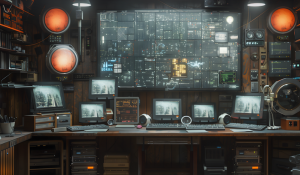
A Blast from the Past: Unpacking the Age of Exploration
Imagine you’re standing on the shores of Europe in the late 15th century, looking out at a churning sea and a horizon brimming with possibilities. This is the setting for what history calls “The Age of Exploration,” a period that saw adventurers and explorers from across the globe venture into uncharted waters, pushing boundaries and forever altering the course of human civilization. But how do we truly understand this pivotal era? It’s like putting together a giant puzzle: each piece revealing a different facet, but all contributing to the same grand picture. This article is your guide to understanding “The Age of Exploration,” with details on key players, motivations, and lasting impacts.
First, let’s dive into the driving forces behind this incredible phenomenon: **the insatiable thirst for knowledge.** Explorers were driven by a desire to map out unknown lands, understand new cultures, uncover trade routes that would unlock vast economic potential, and even establish religious dominance.
Think of it like this: imagine you’re living in Europe during the Renaissance – a time when art, science, and philosophy were flourishing. Suddenly, you discover a whole new map of the world! It opens up doors to unimaginable trade routes, hidden cities, and even untapped resources. The allure of discovery was irresistible!
But this wasn’t just about adventure; there was also an undercurrent of ambition, often fueled by political conflicts and power struggles. Nations like Spain and Portugal were vying for dominance in global trade through the exploration of new lands.
One country that took center stage during this time was **Portugal.** Driven by a desire to establish trade routes to the East, they sent their fleets out across the Atlantic in search of spices, precious metals, and exotic goods. Think of it as the early explorer’s equivalent of a global social media campaign!
But Portugal wasn’t alone. England, France, Spain, and even the Dutch, all joined in on this grand adventure! They were all vying for control of trade routes and resources, which led to heated competition and eventually, colonization.
The Age of Exploration also saw significant advancements in shipbuilding technology. Ships like the carrack and the galleon became more sophisticated. These technological marvels allowed explorers to traverse vast distances and navigate treacherous waters with remarkable skill.
Imagine these brave pioneers navigating uncharted seas, their determination fueled by a combination of curiosity, ambition, and a touch of recklessness. These explorers were often at the forefront of scientific innovation! As they ventured further into the unknown, they made observations, collected data, and even documented new flora and fauna.
The Age of Exploration had a profound impact on the world’s map and its inhabitants. It ushered in a new era of global interconnectedness, with trade routes spanning continents, connecting distant cultures, and laying the foundation for colonialism.
Let’s look at some specific examples: The discovery of Brazil by Europeans opened up a new frontier for sugarcane farms and colonization. The Columbian Exchange, bringing plants, animals, diseases, and people from the Americas to Europe, transformed both continents forever.
It’s important to remember that exploration wasn’t always about finding gold or glory; it was also about understanding new cultures and forging connections with other societies.
For example, Spanish conquistadors like Hernán Cortés traveled to the Americas aiming for religious conversion and conquest. While many explored lands to claim them for their own, some sought to understand indigenous civilizations and learn from their wisdom.
The Age of Exploration was a rollercoaster ride of exploration, discovery, and sometimes, conflict. It’s a story of human ingenuity, ambition, and curiosity.
Our Answer Key to the Past
So, what else can we learn from this era? Here are some key takeaways:
- **The Power of Curiosity:** The Age of Exploration was fueled by a thirst for knowledge and adventure.
- **Technological Advancement:** Ships like carracks and galleons were crucial to the exploration of new lands.
- **Cultural Exchange:** Connections between civilizations spurred trade, increased understanding, and paved the way for globalization.
- **The Complex Impact of Colonization:** The Age of Exploration led to colonialism, which brought lasting social, economic, and political changes to various societies.
A Look at The Explorers:
Let’s dive into the lives of some prominent figures who shaped our world during this extraordinary era:
**Christopher Columbus:** While not the first to reach the Americas, his voyage in 1492 marked a turning point. His “discovery” sparked global exploration and colonization.
**Ferdinand Magellan:** He was the first to complete a voyage around the world, proving that it was possible. His journey is an embodiment of global exploration’s spirit of discovery.
** Vasco da Gama:** This Portuguese explorer led the first successful journey from Europe to India by sea route. This marked a pivotal moment in trade and impacted global history.
**Francisco Pizarro:** His conquest of the Inca Empire in Peru is another example of how exploration could lead to power struggles.
The Legacy of Exploration: A Lasting Impact
The Age of Exploration wasn’t just about sailing the seas; it left behind a complex legacy that continues to shape our world today.
As we look back on this era, we often consider its impact on global trade, cultural exchange, and scientific advancements.
It reminds us of humanity’s insatiable desire for discovery and the interconnectedness of cultures across the globe.
The Age of Exploration left behind a rich tapestry woven from daring journeys, unforeseen consequences, and lasting impact on our world today.


